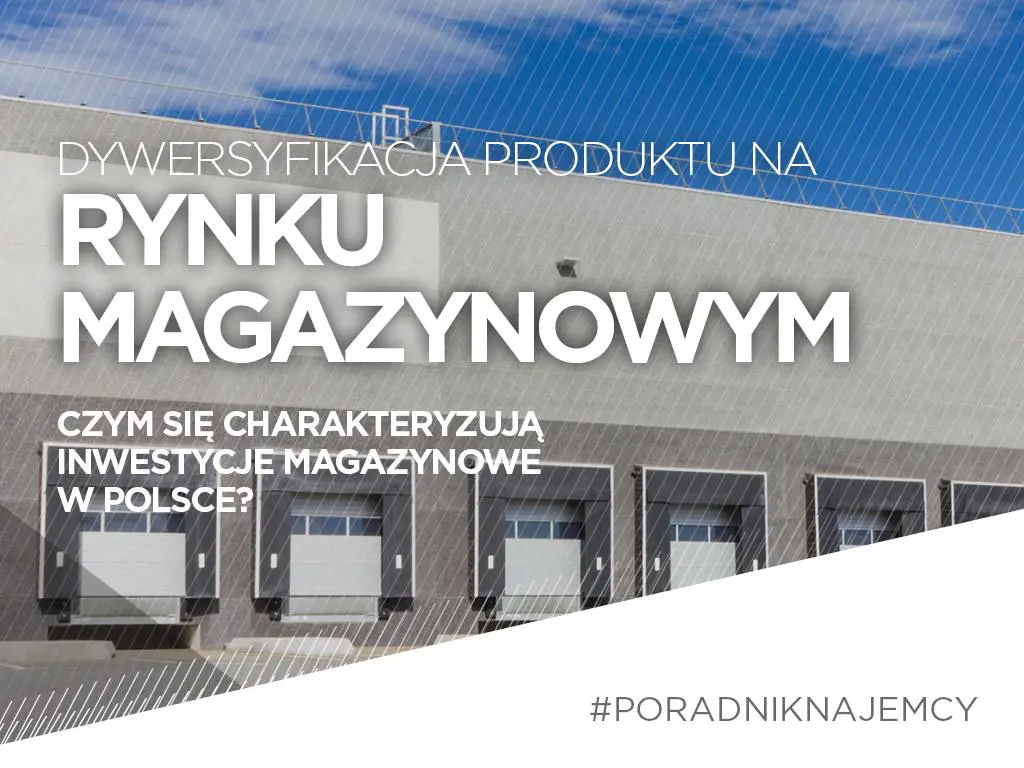Product diversification on the industrial market
24 may 2021

Contents
Warehouses can be divided by size, type and technologies deployed in newly-built industrial facilities. They also include multitenant buildings with a total area of 10,000 sq m or more (big-box facilities) and individual units measuring at least 2,500–3,000 sq m (or a multiple of such sizes).
Warehouses can be divided by size, type and technologies deployed in newly-built industrial facilities. They also include multitenant buildings with a total area of 10,000 sq m or more (big-box facilities) and individual units measuring at least 2,500–3,000 sq m (or a multiple of such sizes).
Small Business Units in inner-city areas
Many tenants, especially occupiers favouring locations close to large city centres, look for smaller warehouse spaces. For them, a warehouse is frequently a business centre that combines warehousing and office functions in a single location. This has given rise to the development of the concept of Small Business Units (SBUs)on the Polish market. Such modern facilities were first built in Warsaw in late 2008 and early 2009 and comprised 600–1,000 sq m warehouses and office units of 100–130 sq m (or a multiple of this size). Although this concept is nothing new, there is still a dearth of such facilities, especially in regional cities where tenants’ needs are frequently met by older schemes that are technologically inferior to modern projects.
Cushman & Wakefield’s survey of industrial developers active in Poland has revealed that key trends for 2021 will include further development of SBU projects.
Warehouse locations in Poland
Another deviation from the mainstream market trend concerns location – warehouses are, in fact, built at any site across the country. Poland used to have five core markets: Warsaw and its suburbs, Central Poland, Upper Silesia, Poznań, and Wrocław; although they continue to account for close to 80% of take-up, the concept of modern warehouses has gradually spread to large regional cities such as Tricity, Krakow, Szczecin, as well as the smaller markets of Bydgoszcz and Toruń, Lublin, and Rzeszów. Modern industrial parks are now available in almost all regional capital cities and are developed almost anywhere a tenant wants to be based.
What functions do warehouses serve? What is most interesting, however, from the perspective of both the market and tenants is the ongoing diversification of warehouse functions. The variety of functions is immense and is expected to evolve further going forward. The market started off with large distribution spaces. The first diversification was forced on the market by manufacturers seeking custom-built space meeting their technical specifications. This was followed by urban warehouses (SBUs) with larger offices. Next came the age of e-commerce.
E-commerce is reshaping the warehouse market
E-commerce companies are having a huge impact on the Polish warehouse market. A 2019 survey conducted for Cushman & Wakefield’s report How to get the hang of e-commerce in warehouses revealed that e-commerce warehouse space accounted for close to 25% of Poland’s total industrial stock. Today, following the changes caused by COVID-19 and the rapid transformation of retail, this figure is estimated at more than 30%.
Projects delivered for e-retailers include not only large distribution centres (with diverse technical specifications due to the type of products handled), but also cross-dock schemes, facilities for courier companies, and small urban warehouses supporting last-mile logistics. Warehouses of the future are likely to combine retail and distribution, the key drivers being e-commerce and the development of omnichannel. Therefore, the growth of retail warehousing appears inevitable.
Sustainability and technologies in Polish warehouses
The diversification of warehouses is a very broad area and developers have plenty of ideas to stand out against competitors. One example of this is the growing trend of green warehouses, usually targeting BREEAM certification. Their technical standards clearly differ from those of projects delivered several years ago. The difference is even more pronounced in comparison with warehouses aged 10+ and is reflected in markedly different occupancy costs, reveals Industrial Goes Green, a report from Cushman & Wakefield.
Another matter of interest is technological diversification of warehouses. Automation – largely forced by e commerce as well – is becoming ever more popular, with warehouses being increasingly customised. Automatic high-bay warehouses are an example of this trend.
What will warehouses of the future look like?
The future will bring more and more changes, including autonomous vehicles. Once approved for use in the European Union and Poland, which is a case of when rather than if, they will significantly change warehouse technical specifications. What will warehouses look like then?
Tenants will also have a say here.

